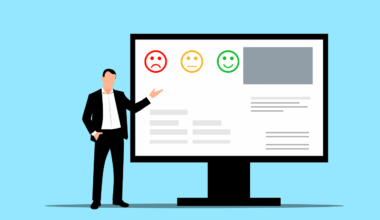Timing Your Content to Ride Trending Topics for Increased Interaction
In today’s digital landscape, understanding how to optimize content timing is critical for boosting engagement rates. Content creators must recognize that posting at the right time can significantly influence how well content performs. Research indicates that aligning your posts with trending topics generates higher interaction rates on social media platforms. To achieve this, businesses should monitor social media trends and current events that resonate with their audience. Utilizing tools such as Google Trends and Twitter’s trending topics can provide insights into what people are discussing. Active engagement during trending moments can make your content more relevant and engaging. It can result in increased click-through rates on your blog posts and social media shares. Also, timing is not just about the hour of the day but can also relate to specific dates and periods. For example, launching a relevant campaign during holidays or event seasons can attract more attention. Building a content calendar that factors in these elements ensures your content arrives when it’s most likely to resonate with audiences, maximizing your investment in content marketing. This proactive approach helps maintain a competitive edge effortlessly.
Understanding Your Audience’s Behavior
Knowing your target audience is vital for deciding when to publish content. Audience insights can guide you to understand the times when they are most active online. Analysis of your website’s traffic sources can reveal peak engagement hours. Equally, social media analytics can showcase when followers interact with your posts most frequently. Tools like Facebook’s Insights, Twitter Analytics, and Instagram Insights provide detailed metrics about your audience’s online behavior. It can help determine both day and time benchmarks for optimal posting. Factors including age demographics, geographical location, and preferences play crucial roles in influencing audience engagement, providing valuable data points for timing decisions. Create audience personas based on these insights. These personas will allow you to tailor content for maximum appeal. Remember, engagement rates may vary across different platforms, so it’s essential to adjust posting schedules to suit each platform’s audience. For example, B2B audiences might be more active during weekdays, while B2C customers engage over weekends. Testing various posting times can help identify what works best for your specific audience, allowing content to resonate more effectively.
Another factor to consider in content timing is the relevance of current events and surrounding news. Being timely with your content allows you to tap into what people are already interested in, aligning your posts with ongoing discussions and trends. Experimenting with this can yield impressive results, as trending topics often attract more clicks, shares, and comments. Crafting your content around major events involves keeping an eye on news cycles, social media trends, and common conversations among your audience. Emphasizing timely elements in your posts engages users who search for current information without delay. Additionally, creating a schedule to measure engagement with trending topics can enhance your overall strategy. Regularly revisiting and adjusting your calendar ensures you remain aligned with audience interests. To optimize your content’s impact, consider combining current themes with evergreen topics where applicable. Striking a balance between time-sensitive topics and timeless content strengthens your engagement strategy. Expanding outreach through timely content can yield increased visibility and interaction, keeping your brand relevant amidst ever-changing dynamics.
Utilizing Content Calendars Effectively
A well-structured content calendar ensures you maintain a consistent posting schedule aligned with relevant trends and timely themes. Planning prevents the last-minute rush and helps in organizing your posts strategically. Start by marking major holidays, events, and trending topics well in advance. Utilize analytics from past posts to determine which topics resonated with your audience at certain times. Building a calendar with these insights allows you to align future content to similar timelines. Break down your calendar by week and month, ensuring a diverse mix of content types to engage your audience regularly. Include reminders to adjust your calendar based on emerging trends and seasonal shifts. Flexibility is essential, so be prepared to update and leap at unforeseen opportunities related to trending topics. Tools like Trello or Google Sheets can aid in organizing your content calendar efficiently. These collaborative platforms can help your team contribute ideas and capture real-time updates. Ultimately, the aim is to integrate timely content for maximized engagement. Regular reviews of performance metrics keep the content strategy fine-tuned as required.
When riding trending topics, consider the impact of various platforms on your content’s reach. Each social media network caters to different audience types, emphasizing the need for tailored content timing strategies. For instance, while Instagram reaches visual-driven followers, Twitter thrives on real-time news sharing. Understanding which platform best suits your audience helps you prioritize content creation and timing effectively. A/B testing can be beneficial; however, consistently monitoring engagement rates across platforms provides strategic insight into what works. Observe how different posting times affect engagement levels on platforms. For example, you might find that Twitter performs better in the mornings while Facebook sees higher interaction around lunchtime. By customizing your approach based on these insights, you position content to take full advantage of platform-specific engagement. Additionally, use hashtag strategies aligned with trending topics to broaden your scope. This enhances content discoverability to audiences beyond your immediate followers. Collaborating with influencers or other brands during key topics can also amplify reach, leveraging their audience. Remember, effective timing means understanding the platform’s unique audience behavior while capitalizing on trends.
Analyzing Metrics for Future Posts
Continuous assessment of content performance is essential for refining your timing strategies. Post engagement metrics such as likes, shares, comments, and click-through rates are valuable indicators of successful content timing. Regularly analyze this data to identify which posts thrived based on the timing of publication. Tools like Google Analytics or social media insights provide in-depth analysis. Track engagement over time to assess how various factors such as day, time, and even the type of content influence performance. Do certain topics generate better interaction during specific times? Discovering clear patterns can guide your future content calendar decisions. Create reports to summarize trends, thus simplifying the evaluation process. Also, pay attention to your competitors and similar industry players. Assess their engagement tactics to learn about potential gaps in your timing strategy. Observing what works for others can inspire adjustments in your own approach. Regular optimization ensures you’re consistently leveraging data-driven insights to boost overall engagement. Moreover, staying attuned to audience shifts ensures your content remains relevant and timely.
Incorporating feedback loops can further enhance content timing strategies. Engaging directly with your audience through surveys or polls provides insights into content preferences and timing. Utilize social media platforms to ask followers when they prefer receiving content or what topics excite them. Feedback is invaluable in shaping future posts to suit audience expectations. Encourage conversations within comments or messages, giving followers a voice. Building genuine relationships can foster loyalty, making your content contributions even more impactful. Additionally, employ tools such as ChatGPT and Hootsuite for automating interactive feedback and managing your posting schedule efficiently. Automation can help streamline your workflows, allowing you to focus on creative content development. While automation is helpful, recall that maintaining a human touch in interactions bolsters audience connection. By fostering community engagement and collecting feedback, you tailor content deliveries to match audience eating habits better. Acknowledging your followers’ preferences solidifies brand loyalty, as they feel valued and understood, ultimately enhancing engagement metrics for the long run.
The synergy between timing your content and leveraging trending topics can make a remarkable difference in audience engagement. Staying vigilant about news events, social media trends, and audience behavior can help content creators achieve substantial interaction increases when publishing relevant posts. Developing sound strategies will require continuous testing, analysis, and integrating audience preferences into your approach. By creating and maintaining a content calendar aligned with peak engagement times, leveraging insights gathered from your audience, and optimizing posting schedules, you establish a continuous cycle of improvement. As trends evolve and audience preferences shift, your strategies should also adapt accordingly. Regular tuning based on performance metrics, audience feedback, and external influences assures that your content timing remains relevant within the fast-paced digital environment. Recognizing that trends are transient motivates constant vigilance and influence agility. Also, centering around quality content remains paramount amidst optimized timing strategies. High-quality and engaging content ultimately drives interactions, meaning that timing only enhances what you already offer. Achieving a successful engagement rate through optimal timing will require thoughtful planning, keen observation, and a commitment to agile responses to the ever-changing trends around you.


